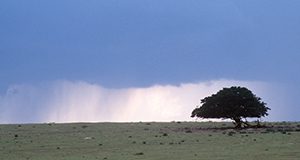This 5-page publication details a new tool available to growers and Extension professionals to manage risks related to climate during seasonal planning stages. The Crop Season Planning tool is a climate-based tool that enables growers to plan planting strategies that will minimize risk to climate extremes based on historical climate data at their location. Written by Caroline G. Staub, Daniel Perondi, Diego Noleto Luz Pequeno, Patrick Troy, Michael J. Mulvaney, Calvin Perry, Brian Hayes, Willingthon Pavan, and Clyde W. Fraisse, and published by the UF/IFAS Department of Agricultural and Biological Engineering, March 2018.
http://edis.ifas.ufl.edu/ae525
Tag: Calvin Perry
Agricultural Management Options for Climate Variability and Change: Variable-Rate Irrigation (AE490)
 Most fields are not uniform because of natural variations in soil type or topography. When water is applied uniformly to a field, some areas of the field may be overwatered while other areas may remain too dry. Variable-rate irrigation technology gives farmers an automated method to vary rates of irrigation water based on the individual management zones within a field and avoid irrigating roadways, waterways, wetlands, and other non-farmed areas within a pivot. This 3-page fact sheet was written by Calvin Perry, Clyde Fraisse, and Daniel Dourte, and published by the UF Department of Agricultural and Biological Engineering, July 2012.
Most fields are not uniform because of natural variations in soil type or topography. When water is applied uniformly to a field, some areas of the field may be overwatered while other areas may remain too dry. Variable-rate irrigation technology gives farmers an automated method to vary rates of irrigation water based on the individual management zones within a field and avoid irrigating roadways, waterways, wetlands, and other non-farmed areas within a pivot. This 3-page fact sheet was written by Calvin Perry, Clyde Fraisse, and Daniel Dourte, and published by the UF Department of Agricultural and Biological Engineering, July 2012.
http://edis.ifas.ufl.edu/ae490
